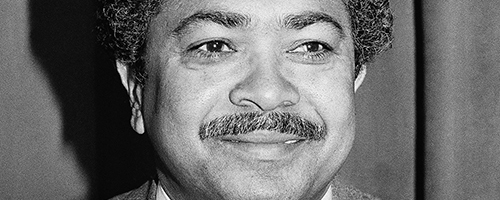A child’s exposure to multiple kinds of violence is more likely to lead to emotional and behavioral issues later in life than if that child had been exposed to violence in fewer forms. That’s according to a study by Portland State’s Laura Hickman and her former colleagues at the RAND Corporation.
PSU professor’s study explores children’s exposure to violence
A child’s exposure to multiple kinds of violence is more likely to lead to emotional and behavioral issues later in life than if that child had been exposed to violence in fewer forms. That’s according to a study by Portland State’s Laura Hickman and her former colleagues at the RAND Corporation.
Hickman, a professor of criminology and criminal justice in the Mark O. Hatfield School of Government, was the co-principal investigator for the study titled “How Much Does ‘How Much’ Matter?” The study focused on 768 children living in select cities across the U.S. who have been exposed to violence.
The study recognizes exposure to 16 kinds of violence, which were organized into four categories: witnessing violence, maltreatment, child assault and sexual abuse. By examining data obtained through standardized interviews with the children’s primary caregivers, the study found that “no single category of violence exposure independently influenced child behavior problems…Instead, it is the mix of exposure experiences that predict negative impacts on children.”
The study is one of several that Hickman’s team has produced.
The studies were funded by grants from the U.S. Department of Justice, which put out a research solicitation for this work in 2005. Hickman’s team responded and won their grant, becoming one of several teams nationwide to participate in this research.
“The main focus of the grant was actually evaluating the effectiveness of intervention programs for children that have been exposed to violence,” Hickman said. “This particular study is looking at the characteristics of a group before they began the intervention programs.”
“That, intuitively, makes a lot of sense,” said Ben Anderson-Nathe, director of the Child and Family Studies Program at the PSU School of Social Work. “It’s not about pathology, it’s about adaptive response. People are social creatures; our adaptive responses are developed in response to the stimuli all around us.”
Anderson-Nathe, who is also an associate professor in the SSW, specializes in youth work, a kind of social work that often directly engages sufferers of past violence.
“A lot of our courses [at the SSW] address child abuse and neglect,” he said, but youth work is “primarily relational in its orientations, instead of interventional.”
This means that emphasis is placed on understanding the totality of a child’s or young adult’s experiences rather than on their actions as they occur.
It’s “really geared toward working with young people to [help them] differently understand themselves and their worlds and interactions,” Anderson-Nathe said. “From a youth work context, we definitely see connections.”
Hickman and Anderson-Nathe are not the only ones working in these areas. Children First for Oregon is a Portland-based children’s advocacy group that advances legislation and conducts its own research and data-gathering relevant to children’s wellness issues in the state. They detail their findings in yearly progress reports.
Children First’s 2012 report indicates that of known domestic abuse, neglect and threat of harm victims, 35.2 percent cited domestic violence as a regular family stress factor—an increase from 32.6 percent in 2011. The report says that while the state of Oregon is “exploring alternative approaches to child welfare interventions,” like foster care placement in situations of domestic violence, “budget cuts and limited staffing [of the state’s child welfare office]…have hindered the state’s ability to fully implement these changes.”
Research and work in these fields continues, and more is being done to explore the topics raised in Hickman’s study.
“There is a companion phase two of this particular effort,” she said. But because she no longer works full-time at RAND, she said, most of the team is continuing on its own.
Hickman’s research, however, offers a number of lessons to students, she said, from exploring basics like research methods and the importance of drawing on real-world examples to “on-the-ground lessons about what can go wrong and how to make it go right.”



